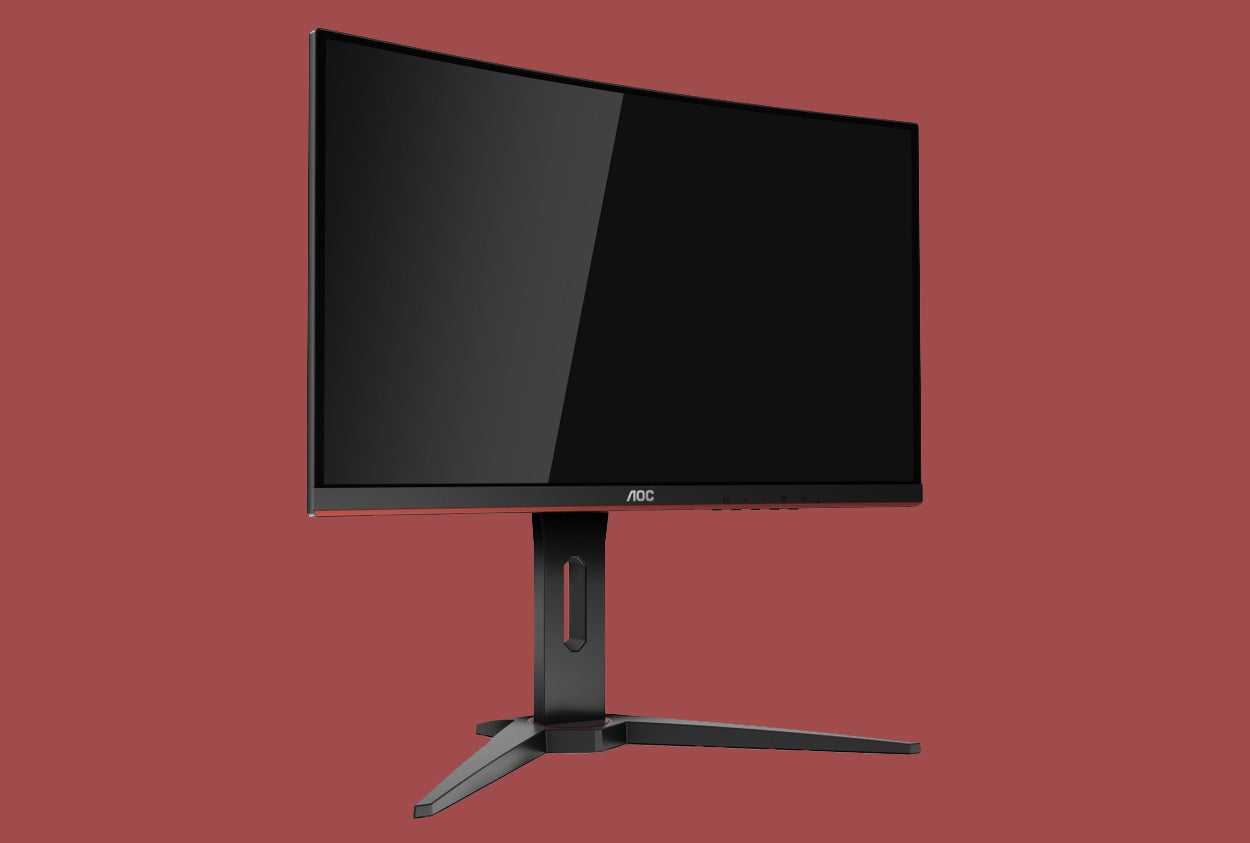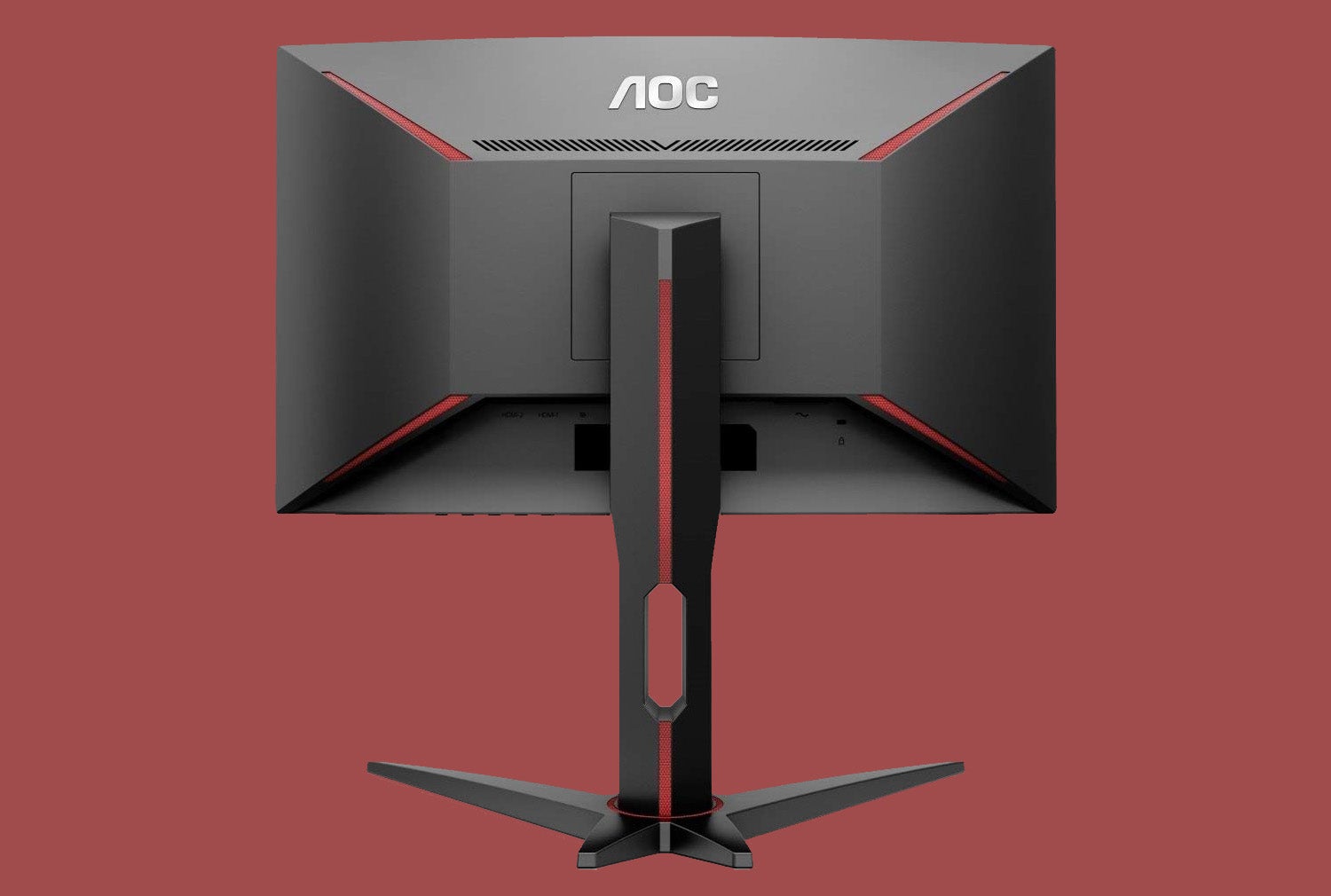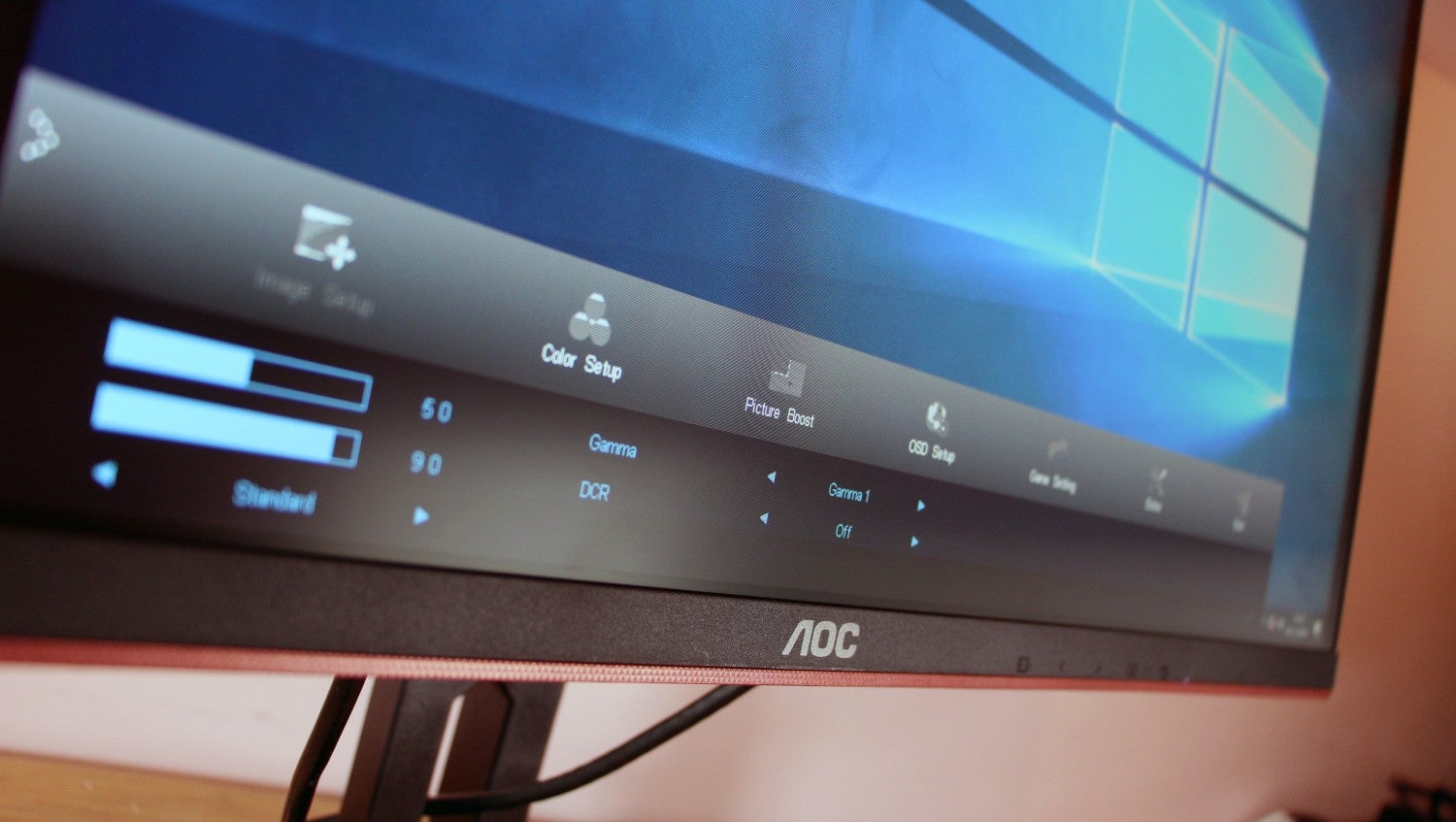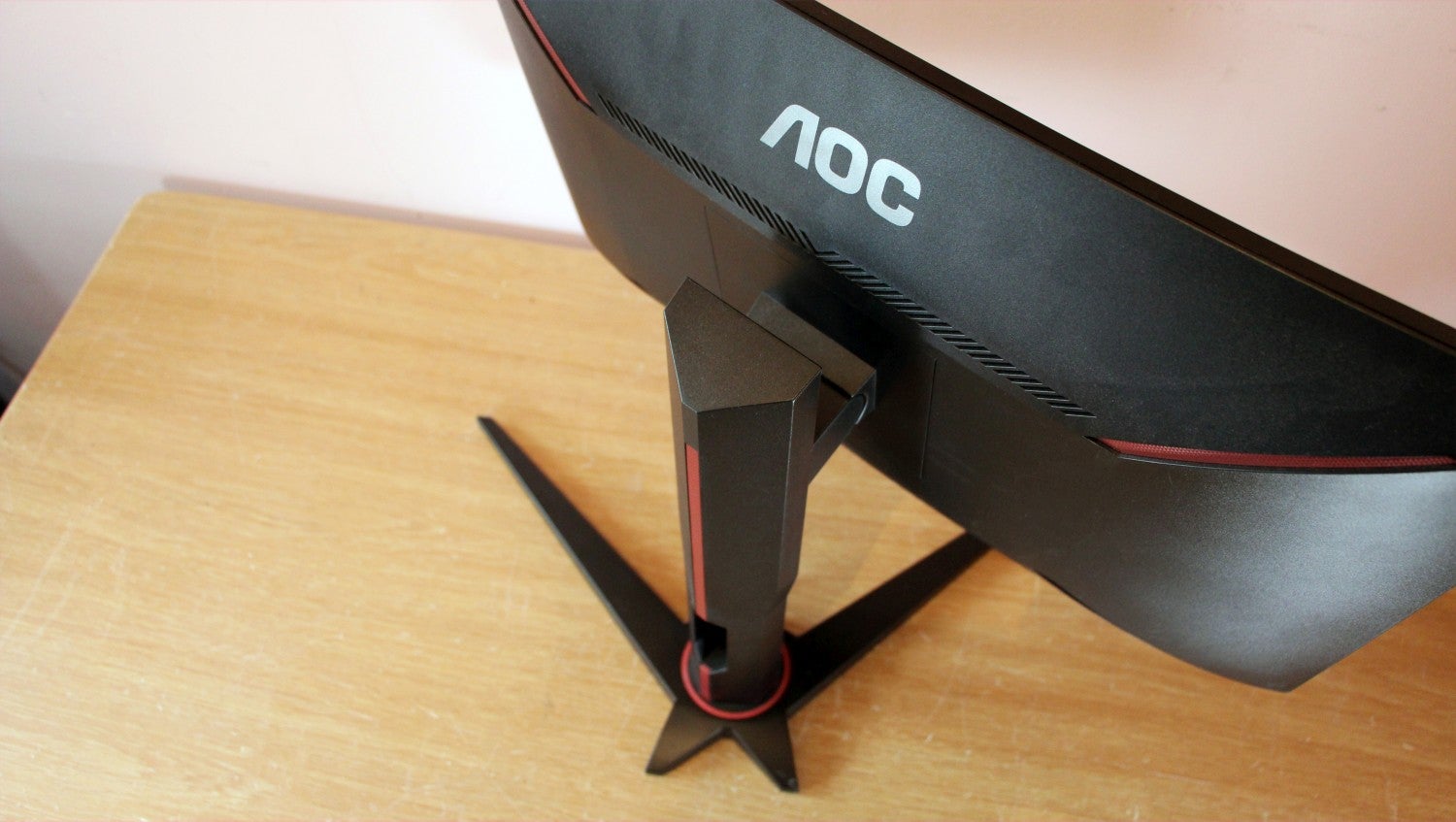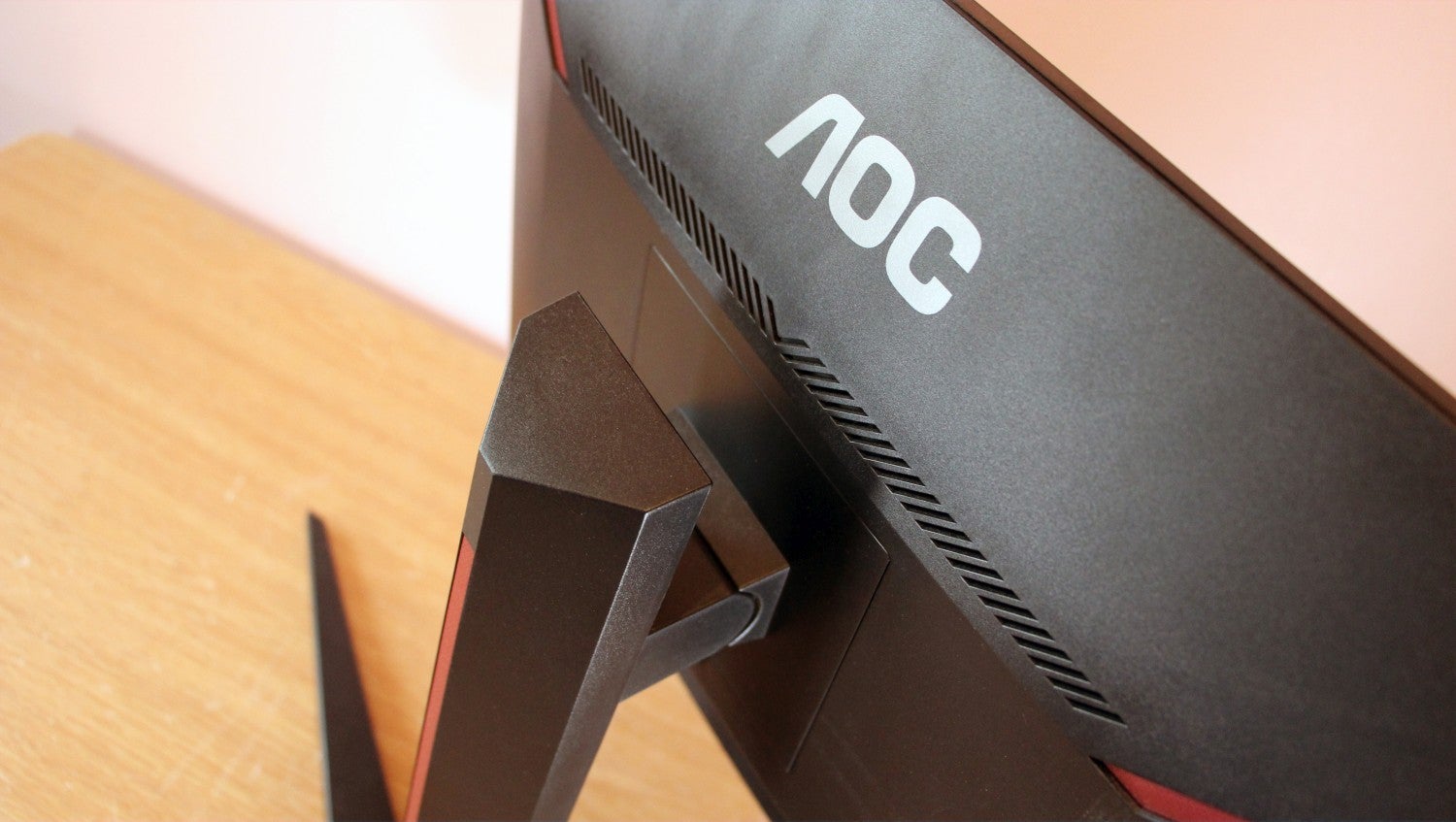AOC C27G1 Review
AOC C27G1 Review
The AOC C27G1 is affordable and packed with features
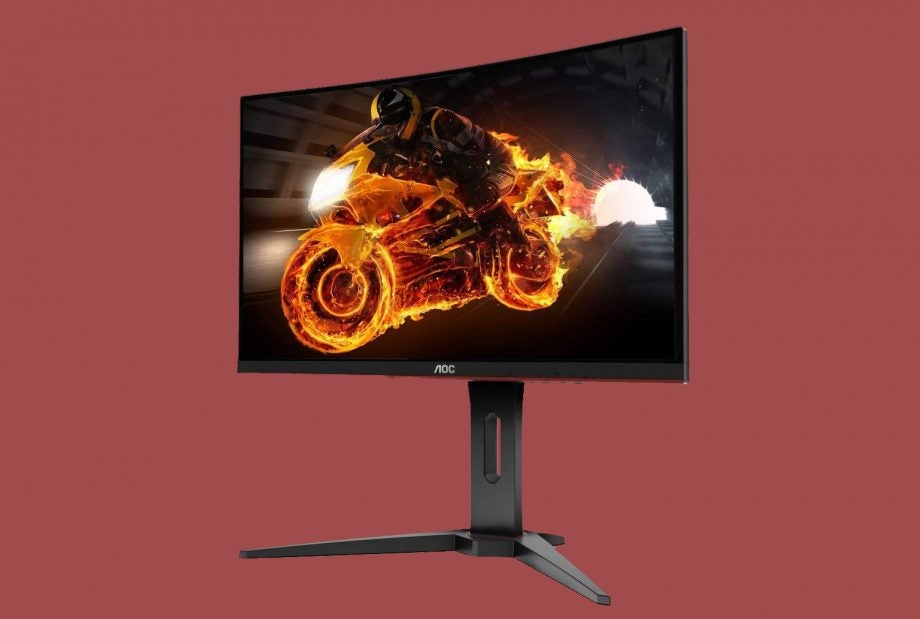
Verdict
Solid in most departments, but with a few faults: the AOC C27G1 is good, but it isn't great
Pros
- 144Hz AMD FreeSync
- Fantastic contrast and black levels
- Reasonable colours
- Solid physical design
Cons
- Poor brightness
- No USB ports
- Occasional ghosting issues
Key Specifications
- Review Price: £250
- 1920 x 1080 resolution
- 144Hz Refresh Rate
- AMD FreeSync
- 1 x DisplayPort, 2 x HDMI
- 27in VA panel
- 1ms response time
The AOC C27G1 is a gaming monitor that’s trying to do it all. The £250 price means it won’t push your PC budget to breaking point, and AOC says that it will prove ideal for casual and competitive gamers thanks to its curved design, rapid response and solid physical design.
However, is this simply too much for one screen to offer without compromising quality? Or can the AOC C27G1 panel deliver the goods for casual and competitive gamers alike?
AOC C27G1 – Design and features
The AOC C27G1 has plenty of game-friendly features, but the headline-grabbing addition has to be the inclusion of 48-144Hz AMD FreeSync.
This technology synchronises your graphics card’s frame-by-frame output with the screen’s frame-by-frame rendering. It’s a simple concept, but those two things being linked means the display can replicate the GPU’s output at the same speed. As a result, games don’t exhibit any tearing or juddering.
Activating AMD FreeSync results in butter-smooth gameplay, and you’ll certainly notice the difference when you compare the AOC C27G1 – or any compatible screen – with a non-FreeSync model. Panels without the technology look jerky in comparison, even if games remain playable.
I’m always pleased to see AMD FreeSync on-screen, because smooth gameplay benefits all sorts of scenarios. It makes competitive gaming more reliable, it makes racing titles slicker, and it makes action games more absorbing.
While it’s always a welcome addition to any screen, it does have its caveats. It only works with AMD graphics cards – if you use Nvidia, you can run the screen at 144Hz, but you can’t synchronise. If you do have AMD graphics then you’ll also need a GPU powerful enough to run your games of choice at 60fps at the very least – or beyond 100fps, if possible. That’s because better frame rates will yield smoother performance from the screen.
The combination of AMD FreeSync and a 144Hz refresh rate is becoming increasingly popular – and affordable, too. The ViewSonic XG2401 is one of the best small gaming monitors around right now and it has exactly the same FreeSync specification. The AOC G2790PX is a more mature gaming monitor from AOC – and it also includes AMD’s technology.
FreeSync may be the AOC C27G1’s most eye-catching feature, but it has solid technology elsewhere, too. The usual 1800R curve makes gaming and movie-watching more immersive without any distortion of the image, and the quoted 1ms response time is fast enough for the keenest competitive players not to worry.
The curve is included on this screen but not on either rival – so that’s one area where the C27G1 goes beyond the competition. The 1ms response time matches the ViewSonic and alternative AOC screens.
Related: Best Gaming Monitors
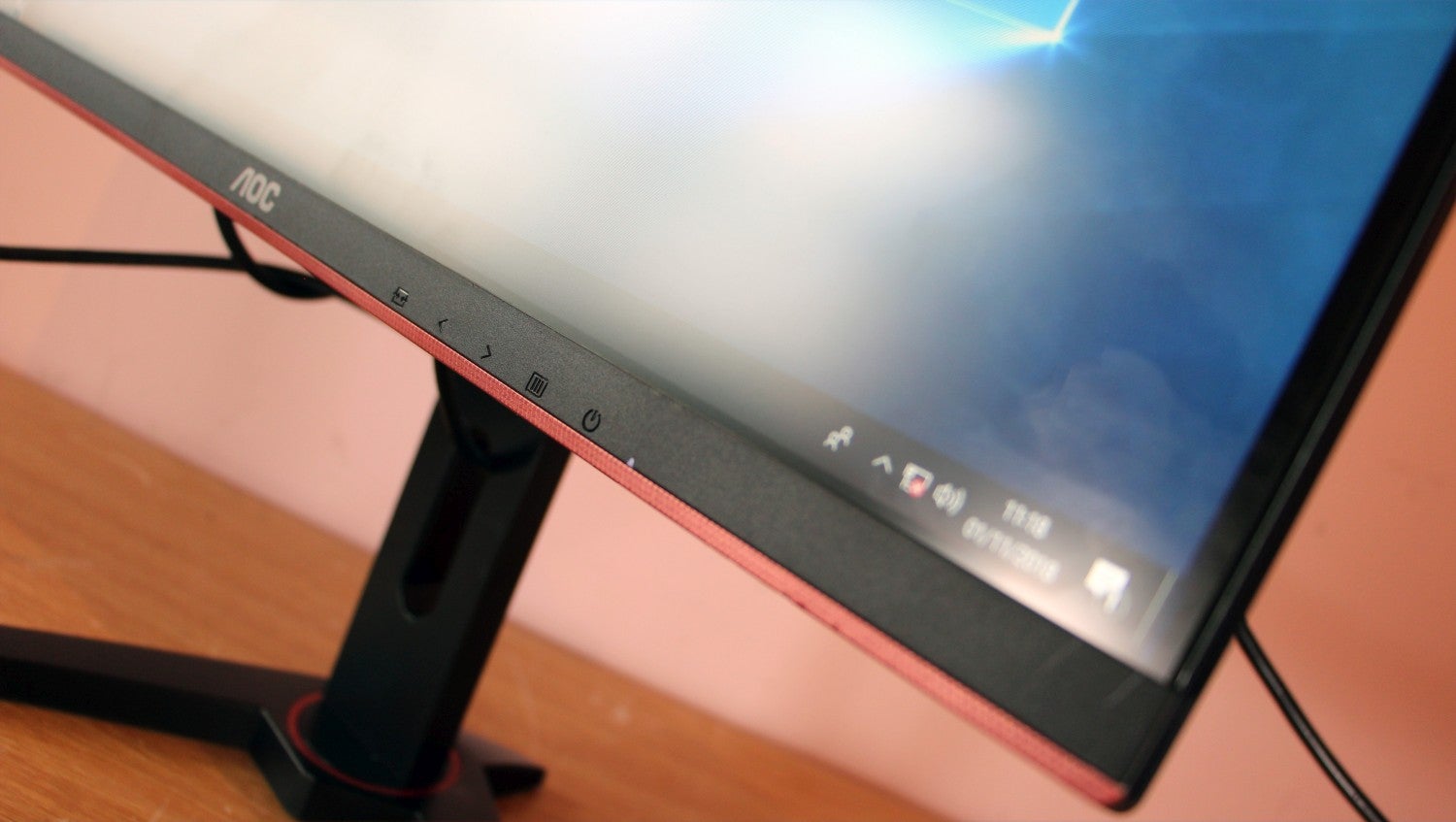
The VA panel beneath should deliver solid image quality, but it may fall behind in other departments
Behind the curved glass you’ll find a VA panel. This is one area where the C27G1 differs from the competition – both rivals have TN screens. The AOC’s VA technology should deliver decent image quality, but backlight bleed may be an issue. It’s also worth noting that VA panels aren’t as quick to respond as TN screens, which may cause a problem for faster games and eSports titles.
The C27G1’s 1920 x 1080 native resolution will be fine for mainstream gaming, from the biggest releases to eSports titles. Plus, it’s also low enough to enable smooth FreeSync playing with a wide variety of graphics cards.
However, a 27-inch screen is the largest size I’d want to use with Full HD; its 82ppi density level isn’t particularly high. The ViewSonic panel has a 24-inch diagonal, so offering a 92ppi figure – and it’s easy to get your hands on 27in panels with 2560 x 1440 resolutions that offer a pixel density of 109ppi.
The lower pixel density may make FreeSync easier, but those pixels are certainly visible if you look closely at the screen – and, of course, games won’t be as crisp as they would be on a screen with a higher resolution.
Related: IPS vs TN vs VA gaming performance and colour explained
Elsewhere, the AOC is missing a few other features. It doesn’t have a USB hub or speakers, and the panel is 8-bit rather than 10-bit. That latter statistic means you get 16.7 million colours rather than 1.07 billion – ample for gaming, although not so good for complex colour work. Gamers won’t be pleased by the absence of a handle and a headphone hook.
This is one area where rivals offer more. The ViewSonic has two USB ports and a pair of speakers, and the pricier AOC alternative has four USB ports and speakers.
You get two HDMI 1.4 ports, a DisplayPort 1.2 connection and a D-SUB input. That connectivity is fine – it matches its rivals – but you could run into problems if you want to connect a number of devices to this unit.
The slim bezel is standard on gaming screens now, too, and it helps the C27G1 lend itself to sleek desks and multi-monitor setups. Elsewhere this screen follows the AOC gaming blueprint: matte black plastic covers most of the panel, and there are dark red accents on the bottom, rear, stand and base.
Related: Best Gaming Keyboards
AOC C27G1 – OSD and Setup
The C27G1 has a conventional setup procedure: the stand snaps into the back of the panel with a screw-free system, and the base attaches to the stand with a single screw.
The AOC weighs 6.1kg, so it isn’t particularly heavy – the 24-inch ViewSonic screen is heavier. The screen sits on two narrow legs that offer a sturdy base without taking up too much room.
The legs look smart, and build quality is decent throughout. You get solid adjustment, too: 34 degrees of side-to-side swivelling, forwards and backwards tilting, and 130mm of height adjustment. VESA mounts are supported, too. That’s normal for a curved screen, but the AOC’s flat-screened rivals can swing up into a portrait position.
A row of buttons at the bottom of the screen’s lower bezel is used to navigate the on-screen display. The OSD itself is the conventional AOC software, which means it occupies most of the bottom of the screen; rather than arranging options vertically, they’re organised horizontally here.
You get the usual options in the usual categories, including different screen modes, manual colour adjustments and the choice to add an FPS counter to the corner of the screen or a crosshair to the centre.
The buttons work well and are sensibly signposted, but I’m not keen on the OSD taking up so much of the screen. It isn’t particularly fast, either, when compared to rival systems.
Related: Best multiroom speakers 2018
AOC C27G1 – Image quality
When it comes to quality, the C27G1 is a mixed bag – and, disappointingly, its results aren’t always particularly conducive to gaming.
Take the contrast and brightness levels. The VA panel’s black level of 0.06 nits is fantastic – one of the best results I’ve ever seen. It’s deep enough to deliver huge depth to colours across the whole range. The contrast ratio of 4416:1 is incredible, too, and it works with the black level to create vivid tones with plenty of depth at every point. That can only be good for games.
Those figures are both excellent, but the brightness level of 265 nits is disappointing. It leaves the screen looking dim, especially if you’re trying to play games in particularly bright situations. Of course, if you’re in a dark room then it won’t be a concern, but it’s something to remember.
The C27G1’s black levels and contrast are miles better than the ViewSonic and other AOC panels. That’s good, and it means that colours have more depth and differentiation on this monitor.
Colours are pretty accurate, too. The average Delta E of 2.15 isn’t far behind the competition, and its colour temperature of 6266K is fine – along with the solid gamma level of 2.15. Uniformity is reasonable, with backlight deviation below 10% in all portions of the panel. The sRGB coverage level of 94.1% is unremarkable, but fine for games.
The C27G1 is a little inconsistent when it comes to some of its pure gaming attributes. If you don’t use AOC’s Overdrive setting, then the keenest competitive players will notice slight ghosting and flickering during fast-paced games. It isn’t obvious and won’t be an issue in many games – plus it’s virtually eradicated by the Overdrive options. But it’s certainly still there.
There’s a little backlight bleeding around the edges, too, although this will only be noticeable on darker screens with little motion.
There are FPS, racing and RTS modes included with this screen, but none are viable. The FPS option ramps up the colour temperature to make the screen look pallid and lifeless, as does the Racing mode – but with poorer Delta E figures, too. The RTS option offers marginally better colour temperature, but not enough to warrant using it.
The AOC’s minor missteps contribute to a screen that falls short of having the necessary capabilities for true competitive gaming.
The use of a VA panel rather than TN hardware means that there’s a little bit of ghosting evident, unless you fiddle with the overdrive options – and this is something that will certainly irritate serious eSports players. The dim backlight doesn’t help, either, with rivals offering better brightness – and therefore more versatility for different games, situations and lighting levels.
Related: Best PC games 2018
Why buy the AOC C27G1?
The AOC C27G1 offers high contrast levels, black measurement and colour accuracy, which means it’s able to make the vast majority of games look good.
However, the screen is too dim, which won’t help in eSports games or beneath bright lights – and the screen does exhibit a little ghosting during more intense scenarios. These results mean that the AOC is better for casual and mainstream gamers rather than eSports players.
It’s a similar story when it comes to features. You get good connectivity, adjustment and build quality, but no USB ports, some missing gaming features and no speakers. The 1080p resolution is as low as I’d want on a 27-inch panel, too.
Despite those negatives, the AOC C27G1 is a solid all-rounder: it has the quality and the features to sate mainstream gamers, and it isn’t too expensive. The ViewSonic is a little better when it comes to features, but the AOC remains a decent choice.
Verdict
Solid in most departments, but with a few faults: the AOC C27G1 is good, but it’s not great.


